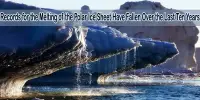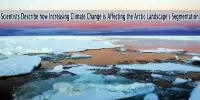Arctic haze is the visible reddish-brown springtime haze in the atmosphere at high latitudes in the Arctic caused by anthropogenic air pollution. It refers to a phenomenon that occurs in the Arctic region during the winter and early spring when a persistent layer of haze or fog forms. This haze often stretches from the ground up to several kilometers into the atmosphere and can greatly impede visibility.
Arctic haze is distinguished by its chemical constituents’ capacity to remain in the atmosphere for much longer periods than other pollutants. The primary cause of Arctic haze is thought to be air pollution, specifically from industrial and urban sources, as well as biomass burning. Long-range air transport transports pollutants from lower latitudes to the Arctic, including sulfur dioxide, nitrogen oxides, carbon monoxide, black carbon (soot), and other aerosols. Once in the Arctic, these pollutants undergo chemical reactions and condensation, resulting in the haze layer.
Arctic haze can stay in the northern environment for more than a month since there isn’t enough snow, rain, or turbulent air to expel contaminants from the polar air mass in spring. Arctic haze not only lowers vision, but it also affects the region’s climate and ecosystem. It has the potential to change atmospheric temperature trends, affect the radiation balance, and influence cloud formation and precipitation. Furthermore, contaminants deposited on snow and ice surfaces might speed up melting and contribute to the loss of Arctic sea ice.
Efforts to combat Arctic haze include lowering pollutant emissions at the source, as well as researching the intricate connections between pollutants, atmospheric processes, and climate dynamics in the Arctic environment. Understanding Arctic haze is crucial for developing effective strategies to address both regional environmental concerns and global climate change.
















